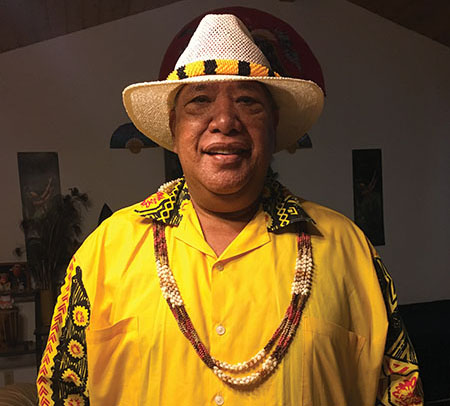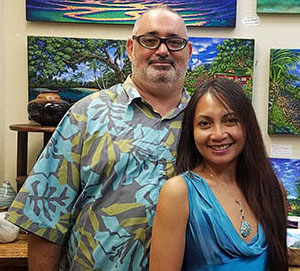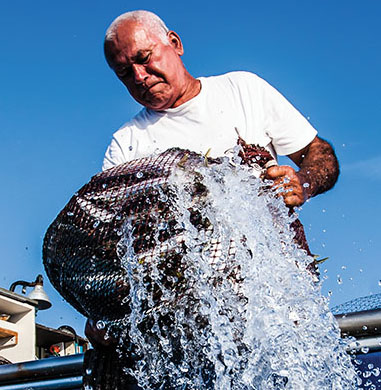
The Right Thing to Do, in Real Time
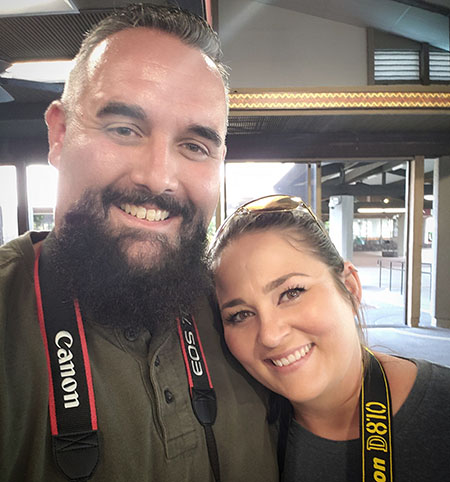
By Judy Edwards
Ken Boyer is a big guy with a big heart and a kind voice, who carries a camera as one of his passions. He grew up in Volcano and lives there still with his wife, Deb, and young daughters. On disability from a work accident, he spends much of his time supporting others where he sees a need. Deb was laid off from her job in December 2017. Still, when Kīlauea erupted in early May 2018, their values would not allow them to stay home and be despondent about themselves. As their upper Puna neighborhood, the summit, rocked with daily earthquakes, they enlisted their girls and got to work.
“My value system was instilled from the family,” Ken tells me, when I ask why he got involved with the eruption relief effort in Puna. “I think a lot of my need to help really came from working with troubled teens when I was younger. They have nothing, wearing rags, are not with their own families. I saw how this lava affected people—so many families living in tents in terrible conditions, especially the kids. I had to help.”
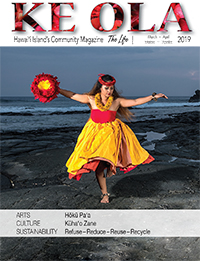
The distance from Volcano to Pāhoa is about 35 miles, one way. Ken calculates he drove over 7,000 miles and spent roughly $1,500 in gas in the summer of 2018, redistributing over $35,000 in donations. First he and Deb donated their own family money, then a trickle of cash donations from multiple sympathetic sources swelled into a river. He turned that cash into food, water, and household goods, and brought necessities to the needy. “We did what we could, but the bulk of the cash donations came from other families, companies and organizations. Disaster Assistance Church of Christ, in particular, was amazing,” he says.
Coordination was a challenge that Deb took on as the couple worked to balance incoming funds with the best use for the people of Puna, where the crisis grew daily as residents fled. “Deb called around to stores to see what they had in stock, and we tried to get the best deals. We went to Walmart every day for at least two months.”
Ken began posting live Facebook updates from the Kīlauea summit, his backyard, and then from anywhere he felt might benefit anyone. He wanted to help his community understand the unfolding events in real time.
As the eruption intensified, local businesses stepped up to help the Boyers. “Target was great with bottled water and price matching,” he says. “Longs Drugs helped us out on water, gave us price breaks, and even helped facilitate bringing in water, because everyone was running out. Pu‘uhonua o Puna [Place of Refuge in Puna, also known as The Hub] in Pāhoa was set up by the community to comfort those displaced by the eruption and was not allowed to distribute water unless it was in bottles.”
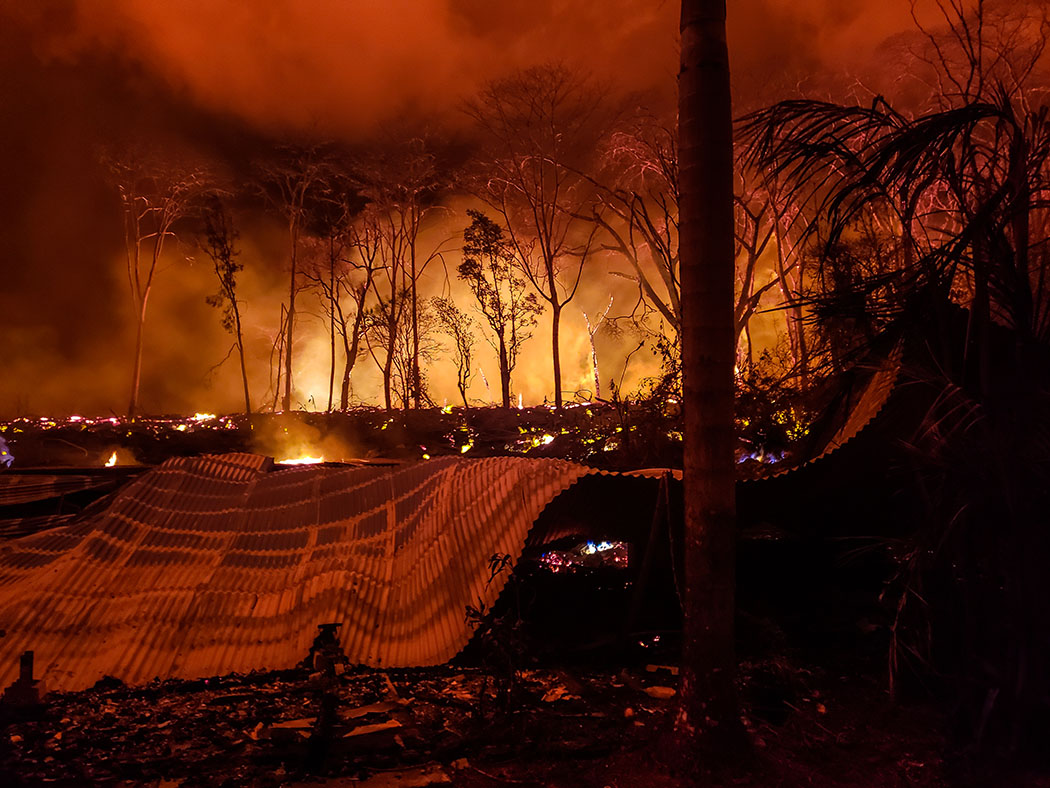
Taking to the Air
Ken was also supported by a private donor to fly with a commercial helicopter company to photograph lava-inundated Leilani Estates, in order to help homeowners with their insurance claims or ease their agony over whether their houses were standing. “Residents of Pāhoa whose homes were in the lava zone called in [to Paradise Helicopters] to vouch for me. The pilots tried to get us over the places we needed to photograph while obeying the flight restrictions.”
Curious about the donor, I ask a few questions; however, Ken demurs. “She wants to remain anonymous. She knew about the eruption because she happened upon one of my live Facebook videos and wanted to help. I told her we needed to get documentation of the state of houses in the eruption zone. Most homeowners couldn’t afford to take helicopter flights. I documented 23 properties inundated or on fire this way.” Ken, with his cameras, flew a few times in mid-to-late May. “I think May 25th is the sad day we saw the most houses burning.”
I ask what was going through his mind as he hovered over Leilani, photographing as much as he could. “Complete disbelief over what I was seeing,” he says with the awe still in his voice. “There were a lot of houses overrun by lava and catching on fire at once, people fleeing, and I had the realization that this is humanity down there, not a barren area like flows of the last decades.”
Fundraising and Local Heroes
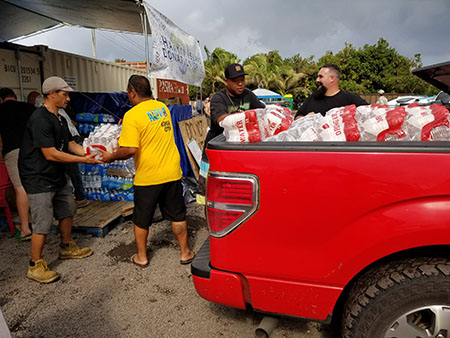
Ken and Deb brainstormed on ways to further help the community and landed on the idea of organizing a car show/donation drive. Ken says, “The Hilo Home Depot let us use the whole parking lot. We reached out to radio stations The Wave, and The Beat FM. Justin Duty, the manager and DJ, invested a lot of time working with us on ads for as many markets as possible. All of the station DJs came to the fundraiser, donated their time, and he ran the studio while they spent the day with us. Without them I don’t think we would have gotten nearly the exposure.”
Car Stereo Specialists called their car club and car shop connections. “Car Stereo Specialists donated a ton of time to that show, spent a lot of their own money, and provided food for the event. I can’t tell you how amazing that was,” Ken says.
The Boyers were hoping 40 cars would show up for the show. They ended up with 120 cars, and donations upon donations. “We loaded three trucks and a van to the very top. My truck was full of water, stacked. I never expected that.” When the heaping caravan arrived in Pāhoa, they filled a 10 foot by 20 foot standing tarp “to the top, with a little overflow.”
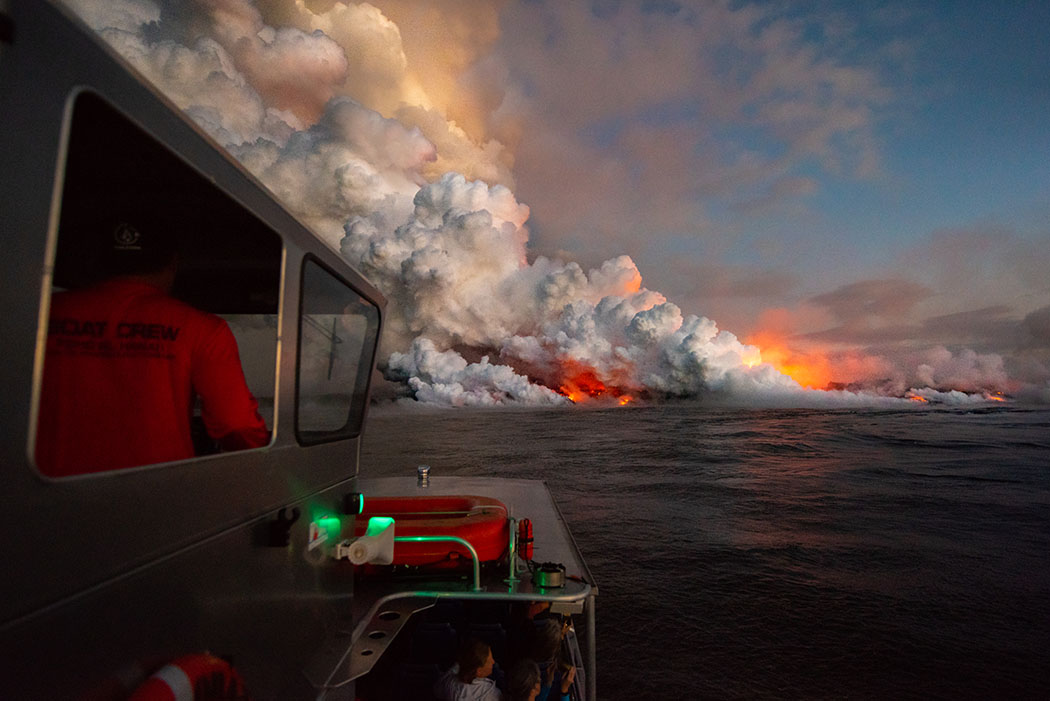
Ken also worked with Bodacious Women of Pāhoa, “Sort of like a food bank,” Ken explains, and April Buxton, who distributed donations from her own tents. However, the majority of the time he coordinated with Pu‘uhonua o Puna. Ken says, “Our blessing in disguise was that we had the time to invest in this. Our youngest daughter just turned 4, and was our everyday helper. She really enjoyed being involved and loved everyone at The Hub.”
Between shopping and donation runs, Ken offered himself and the big red truck for evacuations, driving when his back allowed, and coordinating evacuation assistance. On May 26, Ken and Ikaika Marzo entered Leilani Estates to help Ikaika emotionally support a friend as the lava inexorably approached his home. “The lava was just creeping and it was agonizing to watch,” Ken tells me. “The slow death of a property is so different, so hard. That day we witnessed five houses slowly pushed over, burning. It was heartbreaking seeing residents trying to put out fires starting where the lava began touching houses.” On May 27, a lava lake broke around Fissure 8 and wiped out 27 houses in an hour. Between May 26 and May 29, Ken compiled the bulk of his photos for homeowner documentation.

Regulated evacuations started after May 29, when Civil Defense allowed residents back into Leilani briefly. “People were asking for help with evacuations,” Ken explains. “One of my friends had a house by Fissure 8. We got his stuff and started helping others. I personally helped with 16 evacuations. People tried to give us money and we just said, ‘No, go help somebody else.’”
The frenzy grew in Leilani. One house needing a quick evacuation was very close to Fissure 8. “When we arrived, Fissure 8 had already taken the house right behind hers. Lava shot up in the air hundreds of feet, tephra and Pele’s hair rained down. A raging lava river was coming out of the fissure a couple hundred feet away. Her roof and yard were two feet deep in tephra. Walking, you would fall through. We drove on the tephra to crush it to be able to walk around and got stuck a bunch of times. Volcanic glass was floating everywhere. This poor lady had been away from home and came back to a huge fissure in her backyard.”
Whenever he could, Ken took photos of the crisis unfolding around him, as property owners requested his help to document the state of their houses and land. “They wrote letters I submitted to Civil Defense, who then escorted me. While I was there for evacuations, we’d ask Civil Defense if we could document, and often they would let us. Later that policy changed to no photographs, which was too bad.”
Prior to the policy change, Ken and Ikaika documented as many houses as possible, “in case it would help a homeowner later. If there was a house close to going, I would document that, because those people’s financial livelihoods may depend on it.”
When I ask Ken what remains with him, now that life has settled into the new normal for East Hawai‘i, he thinks for a bit and says, “Nothing, no matter how permanent it feels, is certain. That’s what resonated with me. And I’d help again in a heartbeat because the risk versus reward is worth every bit of it—being able to help and see that people were maybe going to have an easier time because we did help. When you’re in the moment, you’re just doing what is right.” ❖
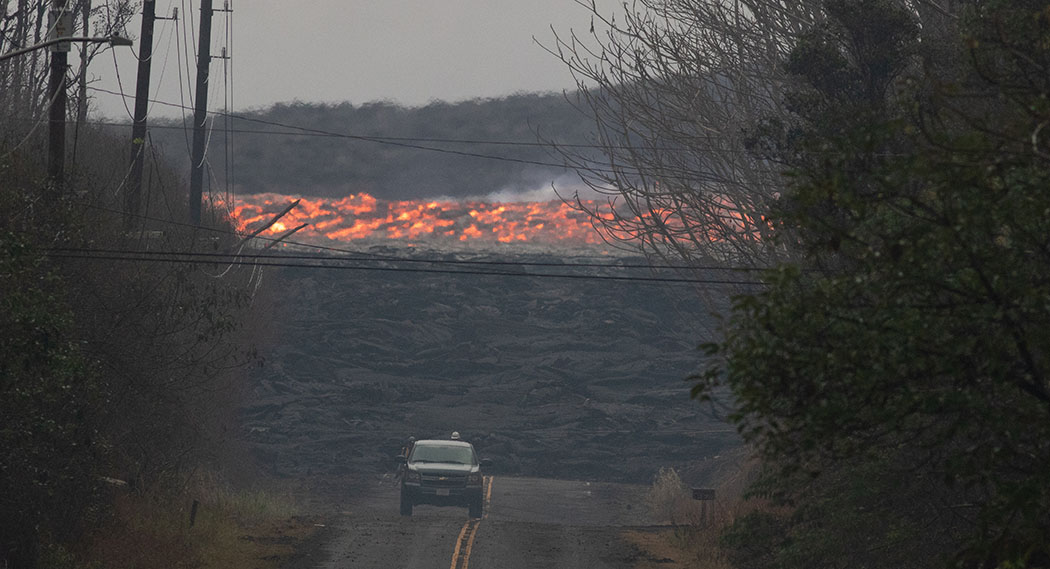
Photos courtesy of Ken Boyer
For more information: kenboyerphotography.com
